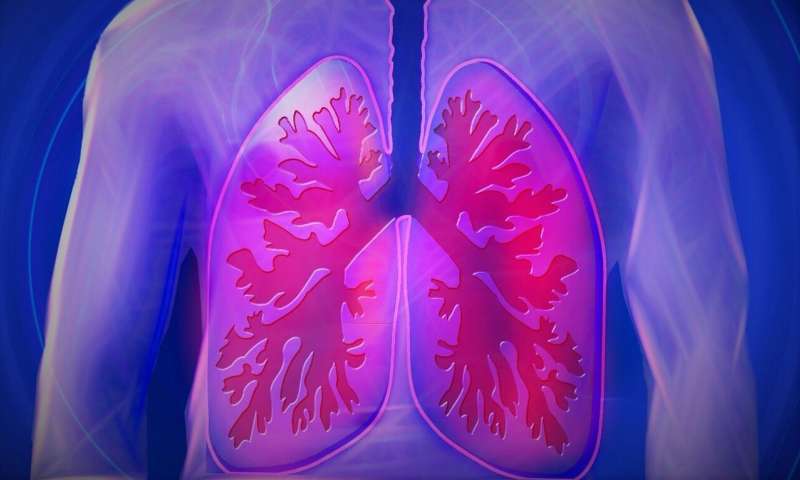Scientists reveal comprehensive proteomic map of human lung adenocarcinoma


A team of Chinese scientists from the State Key Laboratory of Drug Research, Shanghai Institute of Materia Medica under the Chinese Academy of Sciences, along with multi-institutional collaborators, has recently reported a comprehensive proteomic analysis based on 103 Chinese patients with lung adenocarcinoma (LUAD), a leading cause of death among all types of cancer worldwide.
The research revealed LUAD-related molecular characteristics, their association with clinical outcomes, potential prognostic biomarkers and drug targets. This study was published online in Cell on July 9.
Despite remarkable progress in the genomic study of LUAD in recent years, a large percentage of LUAD patients still lack targeted therapeutic strategies. Since proteins are the direct executors of biological activities, a comprehensive proteomic study of LUAD could fill the knowledge gap between genomic abnormality and oncogenic protein function.
To provide a comprehensive understanding of the molecular landscape of LUAD and offer the opportunity for more precise diagnosis and treatment of LUAD, scientists in this study performed integrated proteomic and phosphoproteomic analyses of tumor tissues and their paired noncancerous adjacent tissues from 103 LUAD patients. A total of 11,119 proteins and 22,564 phosphorylation sites were identified. Combining these proteomics data with clinical information and genomics data, a comprehensive molecular landscape of LUAD was obtained.
The scientists discovered that epithelial-mesenchymal transition, as well as inflammatory and oncogenic signaling pathways, likely led to poor prognosis in stage I LUAD. They further established connections between genetic alterations and proteomic characteristics in patients with mutation of EGFR or TP53, two predominant driver genes in Chinese LUAD patients.
Elevated expression levels of two histological markers, TTF-1 and Napsin-A, and proteins in spliceosomes were observed in patients with EGFR mutation. In patients with the TP53 mutation, several oncogenic pathways, including DNA replication and mismatch repair, were changed noticeably.
The researchers classified all the patients into three proteomic subtypes (S-I, S-II, S-III), each containing distinct molecular features and clinical features. Comprehensive bioinformatic analysis showed that S-I patients were associated with a cellular environment and good prognosis. In contrast, S-III patients were associated with cell proliferation and proteome stability and a poor prognosis. The phosphoproteomic analysis further revealed activated signaling pathways and kinases in different proteomic subtypes. The integrative analysis of proteomics data and clinical data further revealed 27 potential plasma biomarkers and several drug targets for LUAD. HSP 90β, one of the potential biomarkers, was further validated in an independent cohort.
Source: Read Full Article